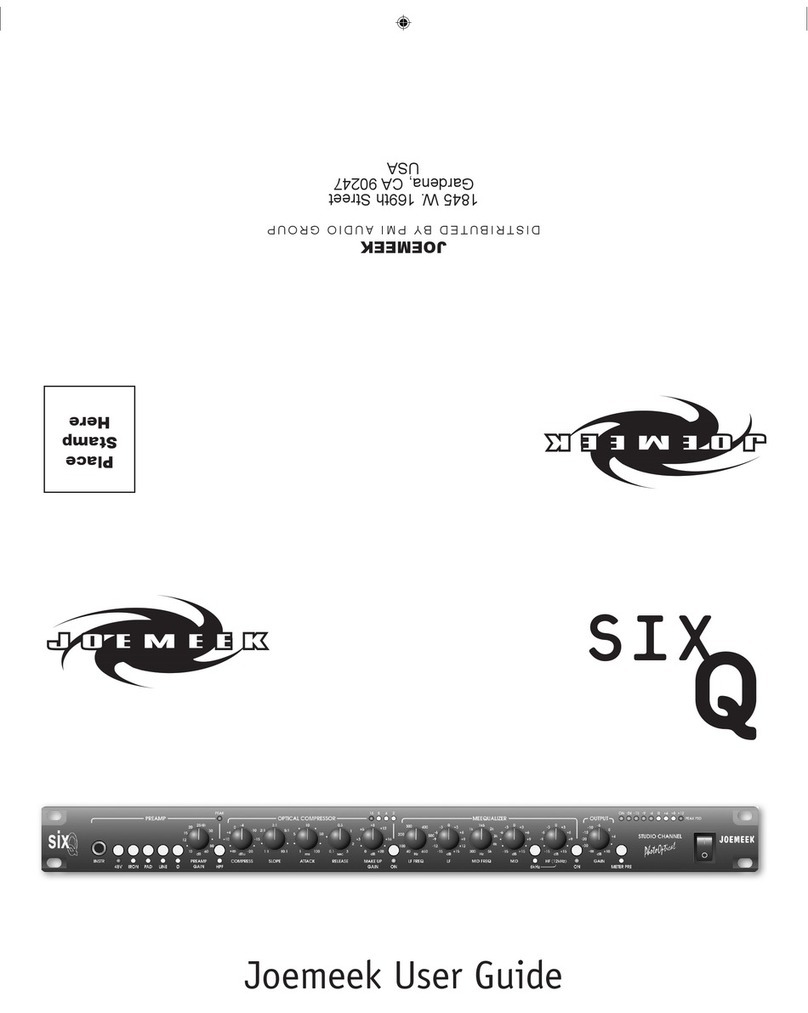
5
1. Read these instructions.
2. Keep these instructions.
3. Heed all warnings.
4. Follow all instructions.
5. Do not use this apparatus near water. Do not expose to drips
or splashes. Do not place any objects filled with liquids, such as
vases, on the apparatus.
6. Clean only with dry cloth.
7. Do not block any ventilation openings. Do not install this
apparatus in a confined space such as a book case or similar
unit. Install only in racks designed for the purpose and in
accordance with manufacturers’ instructions.
8. Do not install near any heat sources such as radiators, heat
registers, stoves, or other apparatus (including amplifiers) that
produce heat.
9. Do not defeat the safety purpose of the polarized or
grounding-type plug. A polarized plug has two blades with one
wider than the other. A grounding-type plug has two blades and
a third grounding prong. The wide blade or the third prong are
provided for your safety. If the provided plug does not fit into
your outlet, consult an electrician for replacement of the
obsolete outlet.
10. Protect the power cord from being walked on or pinched
particularly at plugs, convenience receptacles, and the point
where they exit from the apparatus.
11. Only use attachments and accessories specified by the
_ manufacturer.
12. Use only with a cart, stand, tripod, bracket, or table
specified by the manufacturer, or sold with the apparatus.
When a cart is used, use caution when moving the
cart/apparatus combination to avoid injury from tip-over.
13. Unplug this apparatus during lightning storms or when
unused for long periods of time.
14. Refer all servicing to qualified service personnel. Servicing
is required when the apparatus has been damaged in any way,
such as power-supply cord or plug is damaged, liquid has been
spilled or objects have fallen into the apparatus, the apparatus
has been exposed to rain or moisture, does not operate
normally, or has been dropped.
15. Apparatus designed with Class-I construction must be
connected to a mains socket outlet with a protective earthing
connection (the third grounding prong).
16. This apparatus may be equipped with a single-pole, rocker-
style AC mains power switch. If so this switch is located on the
front panel and should remain readily accessible to the user.
17. The manufacturer reserves the right to change the
technical specification of the product without prior notice.
Important Safety Instructions
CAUTION
CAUTION: TO REDUCE THE RISK OF ELECTRIC SHOCK, DO NOT
REMOVE COVER. NO USER-SERVICEABLE PARTS INSIDE. REFER
SERVICING TO QUALIFIED SERVICE PERSONNEL.
The lightning flash with arrowhead symbol, within equilateral
triangle, is intended to alert the user to the presence of
uninsulated “dangerous voltage” within the product’s
enclosure that may be of sufficient magnitude to constitute a
risk of electric shock to persons.
The exclamation point within an equilateral triangle is
intended to alert the user to the presence of important
operating and maintenance (servicing) instructions in the
literature accompanying the appliance.
WARNING: TO AVOID FIRE OR ELECTRIC
SHOCK HAZARD, DO NOT EXPOSE THIS
APPARATUS TO WATER, RAIN OR MOISTURE.
NOTE — This apparatus does not exceed the Class A/Class B
(whichever is applicable) limits for radio noise emissions from
digital apparatus as set out in the radio interference regulations
of the Canadian Department of Communications.
.
ATTENTION — Le présent appareil numérique n’émet pas de
bruits radioélectriques dépassant las limites applicables aux
appareils numériques de class A/de class B (selon le cas)
prescrites dans le réglement sur le brouillage radioélectrique
édicté par les ministere des communications du Canada.
These limits are designed to provide reasonable protection
against harmful interference in a commercial/residential
installation respectively. This equipment generates, uses,
and can radiate radio frequency energy and, if not installed
and used in accordance with the instruction manual, may
cause harmful interference to radio communications. There
is no guarantee that interference will not occur in a particular
installation. If this equipment does cause interference to
radio or television equipment reception, which can be
determined by turning the equipment off and on, the user is
encouraged to try to correct the interference by any
combination of the following measures: (1) Relocate or
reorient the receiving antenna (2) Increase the separation
between the equipment and the receiver (3) Plug the
equipment into an outlet on a circuit different from that to
which the receiver is connected (4) Consult your dealer or
experienced radio/television technician for additional
assistance.
CAUTION — Changes or modifications to this equipment
not expressly approved by the party responsible for
compliance could void the user's authority to operate this
equipment.
This appliance has a serial number located on the rear panel. Please
record the model number and serial number and retain them for your
records.
Model number
Serial number
4
Important Safety Information




























